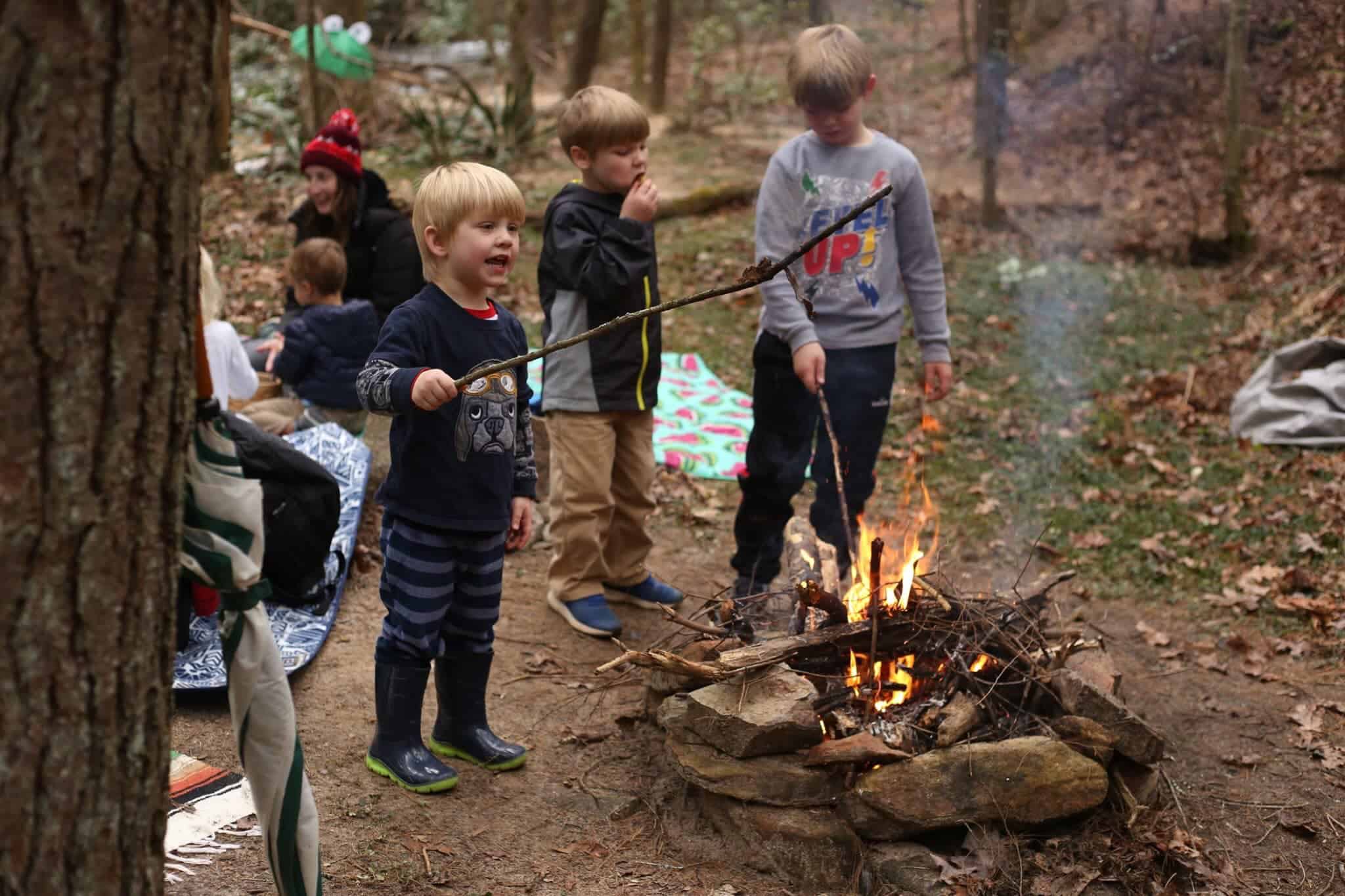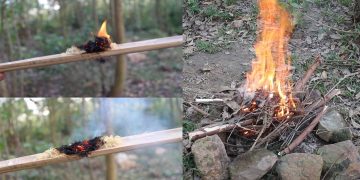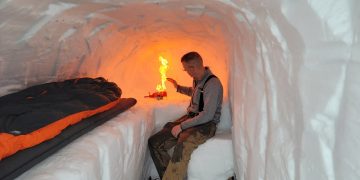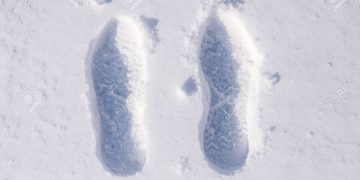Survival is the art of living through adversity, whether you’re stranded in the wilderness, lost at sea, or facing an unexpected emergency. In any environment, the ability to secure the essentials for life is paramount. Among these essentials, fire and water stand as the twin pillars of survival. But what makes them so essential? Fire provides warmth, protection, and the ability to cook food, while water is vital for hydration, bodily function, and survival over extended periods. Together, they form the cornerstones of any survival strategy, enabling humans to thrive in situations where the environment seems to be working against them.
1. The Vital Role of Fire
A. Heat and Protection
Fire is one of humanity’s oldest tools, dating back to when our ancestors first discovered the power of controlling flames. A fire provides immediate warmth, which is essential when temperatures drop, especially in cold environments. Hypothermia—the rapid loss of body heat—can set in quickly in many climates, even in mild conditions. Fire prevents this and keeps our core temperature regulated, ensuring that the body continues to function properly.
Moreover, fire serves as a psychological anchor. In the wilderness, the simple act of starting a fire can restore a sense of control over one’s situation. The warmth and light from a fire can reduce the anxiety that often accompanies being lost or stranded. The light also helps keep wild animals at bay, as many creatures are intimidated by flames.
B. Cooking and Food Safety
Another key survival function of fire is its ability to cook food, which offers several advantages. Cooking food not only makes it easier to digest, but it also kills harmful pathogens that may be present, thus reducing the risk of foodborne illnesses. In survival situations, consuming raw food can sometimes lead to parasites or bacteria that may further compromise health. Fire kills these risks, providing safe, nutritious meals.
Additionally, fire can be used to preserve food through drying or smoking techniques. This is especially important in a survival scenario where access to food may be scarce or inconsistent. A fire enables you to create a cache of food that can last for extended periods.

C. Signal for Rescue
In remote areas, one of the most common ways to signal for help is by creating a large fire. Smoke signals, flares, and other fire-based techniques are often visible from a great distance. In the wilderness, a well-positioned fire can alert rescuers to your location. Even in maritime or aviation emergencies, distress signals involving fire—such as flares—are widely recognized.
Creating a fire also becomes crucial when trying to survive in an isolated, uninhabited environment. A steady column of smoke can travel far across vast expanses, potentially attracting rescue teams or passing aircraft.
D. Psychological Benefits
The mere act of building a fire in survival scenarios can have significant psychological benefits. It instills a sense of accomplishment and provides a visual focus for the survivor. In high-stress situations, maintaining hope is vital, and a fire can serve as a reminder that the survivor is still in control of their environment. The flickering of flames, along with the heat they provide, can bring a sense of comfort that calms the mind, helping to stave off panic and despair.
2. The Vital Role of Water
A. Hydration and Body Function
Water is undeniably the most important resource in any survival situation. While humans can survive without food for weeks, they can only survive for a few days without water. This is because water plays a vital role in virtually every physiological process in the body. From regulating temperature through sweating and respiration to transporting nutrients and oxygen to cells, water is a critical component in sustaining life.
When stranded, dehydration becomes a pressing concern. In dry environments, it’s easy to lose water through sweat and respiration, and this loss must be replenished quickly. Dehydration can lead to dizziness, fatigue, and organ failure. In extreme cases, it can cause death within hours.
B. Water as a Resource for Other Survival Needs
Not only is water needed for hydration, but it also plays an essential role in cooking, cleaning wounds, and maintaining hygiene. When food is cooked over fire, water is needed to create stews, boil food, and clean utensils. In the wilderness, making sure your water is clean and safe to drink is one of the first priorities. Contaminated water can lead to serious illness, which can quickly worsen an already precarious survival situation.
Water also serves a critical function in maintaining hygiene. In survival situations, it’s easy to let sanitation slip, but keeping wounds clean and staying as hygienic as possible can prevent infection. This makes water even more crucial, as it’s needed for both washing hands and cleaning injuries.
C. Sourcing Water
Finding clean, potable water is often one of the most challenging tasks in a survival scenario. While you can live without food for days or even weeks, your body’s ability to function rapidly deteriorates without water. Depending on your environment, different water sources may be available:

- Rainwater: The most reliable source of fresh water when you’re without access to rivers or streams.
- Streams and Rivers: Freshwater streams or rivers may be sources of water, but they require purification, whether through boiling, filtration, or chemical treatments, to ensure they are safe for consumption.
- Snow and Ice: In cold climates, snow or ice can be melted and used as drinking water. However, melting snow requires energy, typically in the form of fire.
In a survival situation, learning to identify water sources and purify them is just as essential as learning how to start a fire.
D. Water in Emergency Preparedness
Water is central to any emergency preparedness plan, whether you’re in an urban or rural environment. Pre-storing water, knowing how to locate clean sources, and having methods for purification are essential aspects of survival training. Even in areas where water seems abundant, it’s important to remember that droughts and other environmental changes can disrupt the flow of potable water, making it scarce.
3. The Intersection of Fire and Water
While fire and water seem like opposites—one being hot and the other cold—their combined importance in survival cannot be overstated. Each complements the other in a variety of ways:
- Purification of Water: One of the most common uses for fire in survival situations is to boil water, making it safe for drinking. Boiling water kills harmful pathogens, making it an effective method of water purification.
- Desalination: In coastal areas where seawater is abundant, fire can be used in distillation processes to remove salt from seawater, creating drinkable water.
- Boiling Food: In addition to boiling water, fire allows you to cook food that requires water. Grains, meats, and vegetables all benefit from being cooked in water, making meals more nutritious and easier to digest.
- Contrasting Roles: Water provides life and sustains it, while fire is a tool that allows us to control our environment. The dynamic between the two forms a balanced foundation for survival, where one is used to create the other, and both are needed for long-term survival in almost every situation.
4. Practical Tips for Fire and Water in Survival Situations
A. Building Fire in the Wilderness
- Materials: To build a fire, you need a reliable fuel source. Gather dry twigs, branches, and leaves. Use bark, resin, or dry grass as tinder, as these catch fire quickly.
- Fire-starting Methods: In emergencies, use waterproof matches, lighters, or a ferrocerium rod. In the wild, fire can be started by friction (such as a bow drill) or by using a magnifying glass to concentrate sunlight onto tinder.
- Building a Fire: The most basic structure is the teepee, where the kindling is arranged in a cone shape around the tinder. The fire will grow from the center outward as it catches the fuel.
B. Water Collection and Purification
- Rainwater: Set up a tarp or other collection system to catch rainwater. Make sure your container is clean, and always purify the water before drinking it.
- Boiling Water: One of the best methods to purify water is boiling. Once water reaches a rolling boil, maintain it for at least one minute to ensure all pathogens are killed.
- Portable Water Filters: If available, use water filters or purification tablets to treat water from natural sources. These tools can be lifesavers in the wild.
5. Conclusion: The Cornerstones of Survival
Fire and water are more than just essential elements of survival—they are the foundation upon which all other survival skills are built. Fire provides warmth, protection, food safety, and a beacon of hope. Water sustains life and ensures that the body continues to function. In any survival situation, mastering the use and management of these resources is crucial.
Ultimately, understanding how fire and water complement each other in both the immediate and long-term survival efforts will increase your chances of staying alive in even the harshest conditions. With the right skills and knowledge, you can turn the most daunting survival scenario into an opportunity to persevere and thrive.























